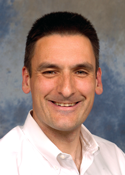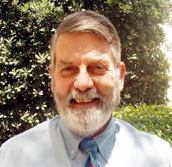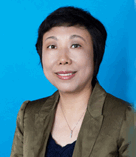GlobalSIP 2013 Symposium on:
Software Defined and Cognitive Radios
[Download the PDF Call for Papers]
Wireless communication has witnessed a continuous trend towards application, services, usage and standard diversification. At the same time, communication services are used more often with battery-powered devices, whose performance requirements are coupled with drastic constraints on energy-efficiency. Besides, the variety of wireless standards and the huge and increasing costs related to system-on-chip design urge high-volume, multi-purpose, and preferably widely programmable devices that can be easily updated even after deployment. An effective solution is the combination of reconfigurable analog front-end circuits and programmable digital baseband engines, namely software-defined radio (SDR). The design of energy-efficient SDR baseband solutions for broadband standards yields exciting design challenges in particular in dynamic spectrum management in cognitive radios (CR) and in improving spectrum sharing efficiency with the aid of cooperative communications. The Symposium invites novel contributions on energy-efficient SDR and CR, baseband processing software design methodologies and dynamic spectrum access.Submissions of at most 4 pages in two-column IEEE format are welcome on topics including:
- Algorithm and architecture co-optimization
- Platforms and architectures for SDR and CR
- RF/analog architectures for SDR
- Design methodologies and tools
- Baseband processing techniques
- Software for SDR and cognitive radios
- Cognitive radio technologies
- Dynamic spectrum access technologies
Keynote Speakers

Alan Gatherer, CTO for Baseband System on Chip, Huawei Technologies, USA, Bridging the gap from SDR to Heterogeneous Baseband SoC
Software Defined Radio (SDR) concepts have had some success in military radio with the development of the Software Communications Architecture (SCA) but have had limited use outside of military radio due to the high overhead. However, several factors in commercial cellular infrastructure wireless are causing people to take a fresh look at SDR concepts. These include the need for multimode radio on a single chip, a desire to reduce OPEX and R&D costs, the exponential increase in the number of use case scenarios for basestations with heterogeneous networks, dense networks, and “softer” approaches to network design with cloud RAN and Software Defined Networks (SDN). In this talk we look at these drivers for change in infrastructure radio to see what changes they imply, we take the SCA apart and examine how part of it may benefit commercial infrastructure and finally we look at how commercial wireless infrastructure hardware differs from the kind of platforms that the SCA was designed for and what difficulties that may imply for the adoption of SDR in wireless infrastructure.
Alan Gatherer is the CTO for Baseband System on Chip in Huawei Technologies, USA. He is responsible for R&D efforts in the US to develop next generation baseband chips and software for 3G and 4G basestation modems. His group is presently developing new technologies for baseband SoC in the areas of message passing hardware and middleware, isolation for multimode, interconnect fabric, CPU/DSP clusters and virtualization. Alan joined Huawei in January 2010. Prior to that he was a TI Fellow and CTO at Texas Instruments where he led the development of high performance, multicore DSP at TI and worked on various telecommunication standards. Alan has authored multiple journal and conference papers and is regularly asked to give keynote and plenary talks at communication equipment conferences. In addition, he holds over 60 awarded patents and is author of the book “The Application of Programmable DSPs in Mobile Communications.” Alan holds a bachelor of engineering in microprocessor engineering from Strathclyde University in Scotland. He also attended Stanford University in California where he received a master’s in electrical engineering in 1989 and his doctorate in electrical engineering in 1993.

fred harris, San Diego State University, USA, The Physical Layer: The Neglected Stepchild in the Communication System
Shannon’s abstracted model of a communication channel is quite simple: Sample input values of ± 1 are randomly chosen and presented to the input port of an ideal channel at a given signaling rate. Sample output values are delivered to the output port with Gaussian conditional density functions with standard deviation σ [N(±1,σ)]. When this channel is followed by a binary decision block, the channel is modeled as a binary symmetric channel with crossover probabilities α(σ). Notice this model makes no mention of wave forms. We occasionally admit that waveforms are involved in the channel but we argue that the waveforms details are unimportant because the channel is linear and distortion free. The only thing the channel does to the waveform is add noise. In the non abstracted world, when we look inside the channel we find a shaping filter, a modulator, an output power amplifier, a multipath channel, a Doppler offset, an input low noise amplifier, a matched filter, an equalizer block, a timing recovery block, a carrier phase recovery block, an AGC block, and an SNR estimator block. Every one of these blocks and processes are imperfect and contribute various types of distortion and signal degradation. We can argue that the channel is certainly not linear.
Because Shannon did not mention waveforms, we somehow started thinking they were not very important, or that waveforms were a solved part of the problem, and started thinking that communications is simply the manipulation of bits by source coding, channel coding, and application codes. Not so! When we include the physical layer in Shannon’s model we find the performance of real systems at low and at high SNR is significantly different from that of the binary symmetric linear channel model. It is time we gave the physical layer its due: nothing at the bit level works unless the physical layer works. The communication system uses waveforms and a significant fraction of the energy in a communication system is allocated to the care and feeding of these waveforms. We call it signal processing! We can’t simple wash away the physical layer with comments such as “Let’s assume the system is synchronized”.
fred harris holds the Signal Processing Chair of the Communication Systems and Signal Processing Institute at San Diego State University where since 1967 he has taught courses in Digital Signal Processing and Communication Systems. He holds 20 patents on digital receiver and DSP technology and lecture throughout the world on DSP applications. He also consults for organizations requiring high performance, cost effective DSP solutions.
Prof. harris has written over 220 journal and conference papers, the most well known being his 1978 paper “On the use of Windows for Harmonic Analysis with the Discrete Fourier Transform”. He is the author of a number of books on DSP applications. In 1990 and 1991 Prof. harris was the Technical and then the General Chair of the Asilomar Conference on Signals, Systems, and Computers and was Technical Chair of the 2003 Software Defined Radio Conference, of the 2006 Wireless Personal Multimedia Conference, and the 2013 DSP Conference. He became a Fellow of the IEEE in 2003, cited for contributions of DSP to communications systems. In 2006 he received the Software Defined Radio Forum’s “Industry Achievement Award”. His paper at the 2006 SDR conference was selected for the best paper award as was his paper at the 2010 Autotestcon conference and again my paper at the 2011 Wireless Personal Mobile Communications Conference and once again the 2011 SDR conference. He is the former Editor-in-Chief of the Elsevier DSP Journal.

Xiaolin Lu, Texas Instruments, Inc., Software Defined Radio for Smart Utility Networks
Software Define Radio (SDR) technology is being deployed in wireless base stations to support growing number of wireless communication standards for cellular networks. With the new market developed for smart grid such as Smart Utility Network, the similar type of requirements for the reliability and flexibility of wireless band plans, digital signal processing algorithms used in the PHY layer gives the opportunity of applying SDR technology to command/control type networking applications. The SDR can be used for both Base Station side (and Data Concentrator side) as well as electricity meter side which plays the role of hub for Gas and Water meters in the customer premise. The IEEE 802.15.4g standard itself supports multiple frequency bands as well as PHY layer protocols such as FSK, OFDM and DSSS modes. In order to meet the requirements of transformation of communication infrastructure for smart grid, a new type of SDR architecture is defined to support multiple frequency band plans, multiple physical layer of communication standards, multiple network protocols and complemented with wired power line communications targeted for automated electricity metering in Smart Utility Network. Under the umbrella of programmability and flexibility, the low power consumption, and cost efficiency are also considered to achieve the ultimate goal of higher reliability and full network coverage. This talk will be focused on challenges encountered in the SoC architecture as well as tradeoffs among flexibility, programmability under the constraint of power and cost.
Xiaolin Lu is TI Fellow and manager of the Smart Grid R&D center at TI. She is responsible for driving various differentiated industrial- and energy-related software solutions using TI embedded processor and analog devices. Xiaolin has worked on various embedded system and software programs, including Narrow Band Power Line Communication Systems, Wireless and Wired Hybrid Sensor Network, Smart Power Software Framework, LTE/Wimax Prototypes, Wi-Fi/Bluetooth co-existence and digital mobile TV SoC, etc.
Xiaolin is well-known as an embedded system and software expert inside and outside TI and has given keynote and plenary talks or presentations at numerous technical conferences. In addition, she is the author/co-author of more than 22 U.S. patents and the recipient of the National Women of Color award in the Technical Innovation – Industry category. Xiaolin is the first TIer to co-chair the Industrial Advisory Board at the University of Texas at Dallas (UT Dallas). In her free time, Xiaolin enjoys piano classes with children, classical music and leisure travel.
Paper Submission
Submit papers of at most 4 pages in two-column IEEE format through the GlobalSIP website at http://www.ieeeglobalsip.org/Papers.asp. All papers (contributed and invited) will be presented as posters.
Important Dates
| Paper Submission Deadline | June 15, 2013 |
| Review Results Announce | July 30, 2013 |
| Camera-Ready Papers Due | September 7, 2013 |
Organizing Committee
Technical Program Committee
| Warren J. Gross | McGill University, Canada |
| Hiroshi Kawaguchi | Kobe University, Japan |
| John McAllister | Queen's University Belfast, UK |
| Vassilis Paliouras | University of Patras, Greece |
| Yang Sun | Qualcomm, US |
| Lei Wang | University of Connecticut, US |
| Marilyn Wolf | Georgia Institute of Technology, US |
| Carlo Galuzzi | TU Delft, Netherlands |
| Markku Juntti | Univ. Oulu, Finland |
| Peter Farkas | Slovak Univ. Tech., Slovakia |
| Elettra Venosa | SDSU, US |
| Mihai Sima | Univ. Victoria, Canada |
| Leonel Sousa | INESC-ID, Portugal |
| Holger Blume | Univ. Hannover, Germany |
| Hartwig Jeschke | Univ. Hannover, Germany |
| Klaus Moessner | Univ. Surrey, Ireland |
| Kiran Gunnam | nVidia, US |
| Ahmed Eltawil | UC Irvine, US |
| Christoph Studer | Rice University, US |
| Byonghyo Shim | Korea University, Korea |
| Juha Yli-Kaakinen | Tampere Univ. Tech., Finland |
| Janne Janhunen | Univ. Oulu, Finland |
| Hun-Seok Kim | Texas Instruments, US |
| Haris Volos | University of Arizona, US |
| Friedrich Jondral | Karlsruhe Institute of Technology, Germany |
| Adly Fam | University at Buffalo, US |
| Heikki Berg | Nokia, Finland |
| Ian C. Wong | National Instruments, US |
| Mikko Valkama | Tampere Univ. Tech., Finland |
| Faouzi Bader | SUPELEC, France |
| Alexander M. Wyglinski | Worcester Polytechnic Institute, MA, US |
| Andreas Springer | Johannes Kepler University Linz, Austria |
| Paul Sutton | Trinity College Dublin, Ireland |
| Andreas Burg | EPFL, Switzerland |
| Won Namgoon | University of Texas at Dallas, US |
| Min Li | IMEC, Belgium |